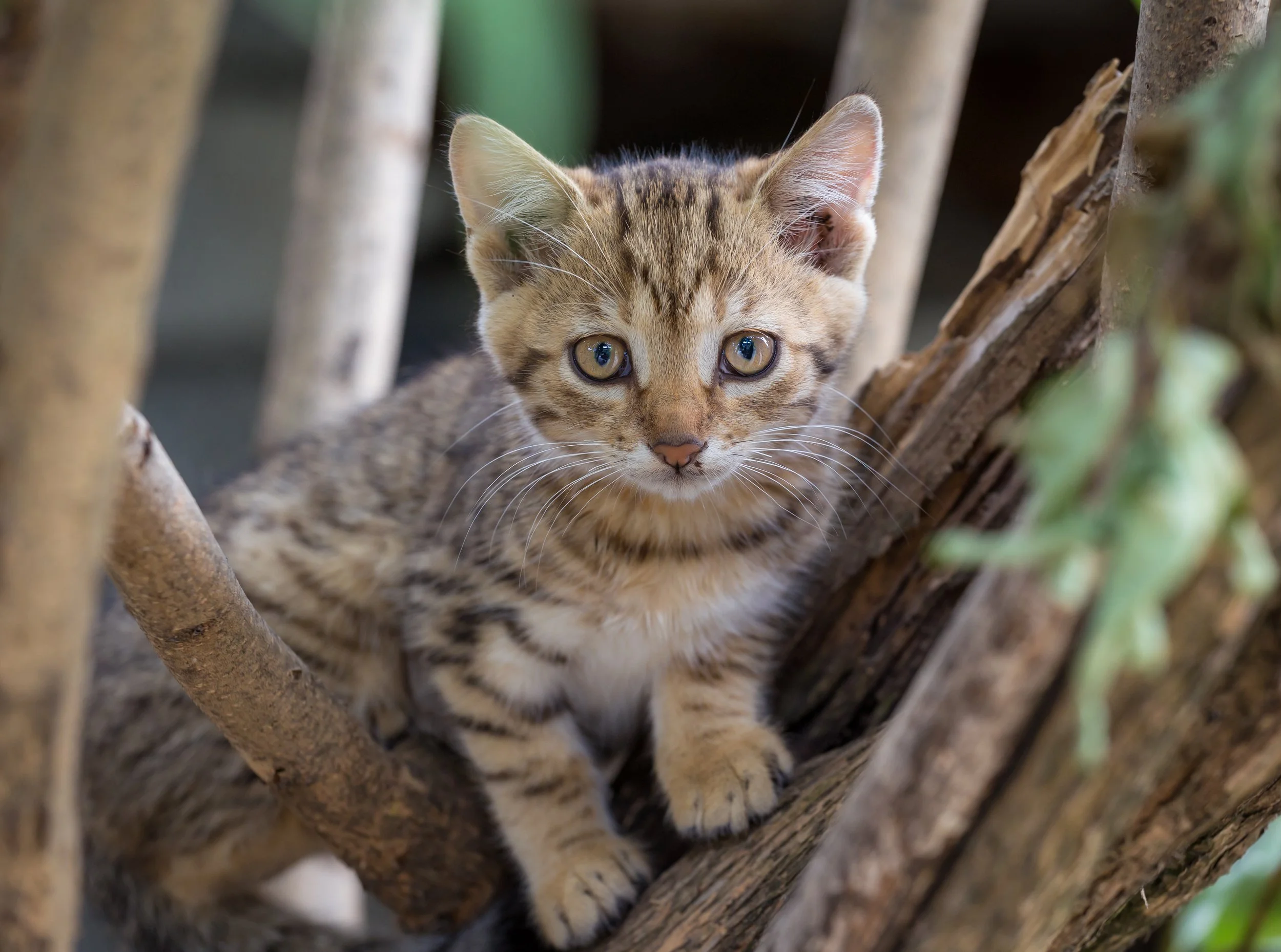AnimalSave's Feral Cat Program
A feral cat is either a cat who has lived their whole life with little or no human contact and is not socialized, or is a stray cat who was lost or abandoned and has lived away from human contact long enough to revert to a wild state. Feral cats avoid human contact and cannot be touched by strangers.
AnimalSave works exclusively with a local feral cat trapper. That person traps feral cats, brings them to our spay/neuter clinic for surgery, recuperates them if necessary, and returns them to the property where trapped.
Trap-Neuter-Return (TNR) is a proven procedure in which entire colonies of stray and feral cats are humanely trapped, spayed/neutered, and vaccinated. This method of population control is more effective than trap-and-kill. Kittens and tame cats can be adopted into good homes. Adult cats too wild to be adopted are returned to their colony and become place holders to prevent new cats from coming in.
Please call (530) 477-1706 and leave a message with your contact information, the number of cats you have and where you are located, and will will forward that information to our feral cat trapper. You will be contacted as soon as possible about getting on the schedule. Please know that we are booked out at least a month.
See the Spay/Neuter Clinic page for cost.
Myths and Facts about Feral Cats
Myth 1: Feral cats can be eradicated by trapping and killing.
Fact: Many decades of eradication campaigns have done nothing to reduce the numbers of stray and feral cats. Survivors breed exponentially; new cats move in, reproduce, and take advantage of whatever food and shelter exist. This is called the “vacuum effect.”Myth 2: Feral cats present a high risk of spreading rabies.
Fact: Rabies in the U.S. is overwhelmingly a disease found in wildlife. From 2000-2021, only 10 people died from rabies in this country, and not one of them contracted the disease from a cat.Myth 3: Feral cats are sickly and diseased.
Fact: Scientific studies show that feral cats in managed colonies generally enjoy the same good health, fitness, and low occurrence of disease enjoyed by pet cats.Myth 4: Feral cats are a significant cause of bird and wildlife depletion.
Fact: Numerous studies by government and environmental groups indicate that the overwhelming causes of wildlife depletion are destruction of habitat due to human development, human-made structures, chemical pollution, pesticides, and drought . . . not feral cats.
Did You Know . . .
That 80 percent of shelter cats are or were feral?
That feral cats very seldom meow?
That a stray cat is not the same as feral cat? A stray cat is one that lived indoors and was socialized to people at one time, but has left or lost her home or was abandoned, and no longer has regular human contact. A feral cat is an unsocialized outdoor cat who has either never had any physical contact with humans, or human contact has diminished so much over time that she is no longer accustomed to it.
That male feral cats tend to have much larger, blockier heads than desexed domesticated cats?
That estimates show that there are approximately 32 million feral cats in the U.S.?
Barn Homes Needed for Feral Cats
AnimalSave sometimes has outside, unsocialized cats that would love a barn or garage to call home. They need a dry, safe place to sleep, as well as cat food and water. A truly feral cat will probably never tolerate being petted—however, they do learn to trust, will stay close by if given adequate time to acclimate, and can provide non-toxic rodent control. These feral cats are always spayed or neutered and vaccinated before they’re placed with you. Please call us at (530) 271-7071 for more information.


